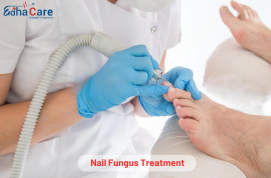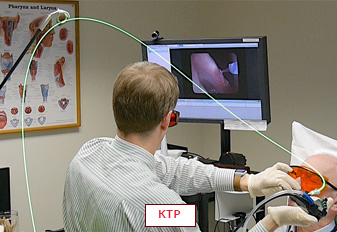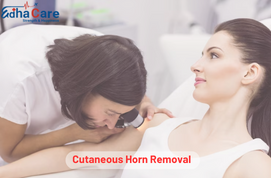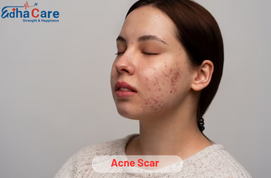Nail Fungus Treatment

Nail fungus treatment addresses fungal infections affecting the nails, medically termed onychomycosis. Characterized by discoloration, thickening, and brittleness of the nails, onychomycosis often requires a multifaceted approach for effective resolution. Common treatments include topical antifungal medications, such as creams, ointments, or nail lacquers, applied directly to the affected nails. In more severe cases or when topical treatments prove ineffective, oral antifungal medications may be prescribed. Additional procedures like debridement (nail trimming), laser therapy, or photodynamic therapy may be recommended to target the fungus more directly. Consistency in following the treatment plan and practicing proper nail hygiene are crucial for preventing recurrence and promoting healthy nail growth.
About Nail Fungus Treatment
Symptoms: A condition called on also known as nail fungus, commonly manifests as thicker or fragile nails, distorted nail shape, and nail discoloration (yellow, brown, or white). Certain people might feel discomfort or pain, particularly if the illness spreads.
Causes: Fungal diseases, frequently brought on by dermatophytes, yeast, or mold, are the common cause of fungus in the nails. Warm, humid settings (like sweaty shoes or open showers), damaged nail integrity (such trauma or injury), an immune system that is weakened, poor circulation, and specific medical disorders (like diabetes) are among the factors that raise the chance of getting fungus on your nails.
Remedies: For nail fungus, treatment options include oral antifungal medications (given by a healthcare provider for severe or resistant instances), topical antifungal treatments (such as creams, ointments, or nail lacquers), and surgeries like debridement (trimming the fingernails) or laser treatment. To stop the spreading of fungus, it's also critical to maintain proper hygiene of the nails, keep feet dry and clean, wear breathable stockings and footwear, and refrain from exchanging personal goods like footwear or clippers with others.
Procedure of Nail Fungus Treatment
Consultation and Evaluation: The patient consults with a healthcare provider, usually a dermatologist, who evaluates the nails and confirms the diagnosis of nail fungus. The severity of the infection and the extent of nail involvement are assessed during this consultation.
Treatment Plan Development: Based on the evaluation, the healthcare provider develops a personalized treatment plan tailored to the patient's needs and the severity of the infection. The plan may include one or a combination of treatment options, such as topical or oral antifungal medications, and procedural interventions.
Topical Antifungal Medications: If the infection is mild to moderate, the patient may be prescribed topical antifungal medications, such as creams, ointments, or nail lacquers, to apply directly to the affected nails. These medications work by penetrating the nail and targeting the fungus.
Oral Antifungal Medications: In cases of moderate to severe nail fungus or when topical treatments are ineffective, oral antifungal medications may be prescribed. These medications are taken by mouth and circulate throughout the body to attack the fungus from within.
Procedural Interventions: In addition to medications, procedural interventions such as debridement (trimming and thinning the nails), laser therapy, or photodynamic therapy may be recommended to target the fungus more directly and promote healthy nail growth.
Follow-Up Visits: The patient attends regular follow-up visits with the healthcare provider to monitor treatment progress, assess the effectiveness of the medications or procedures, and make any necessary adjustments to the treatment plan.
Nail Care and Hygiene: Throughout the treatment process, the patient is advised to practice good nail care and hygiene to prevent reinfection and promote healing. This may include keeping the nails clean and dry, wearing breathable footwear, avoiding nail trauma, and using antifungal products as directed.
Require Assistance?
Get A Quick Callback From Our Healthcare Experts






